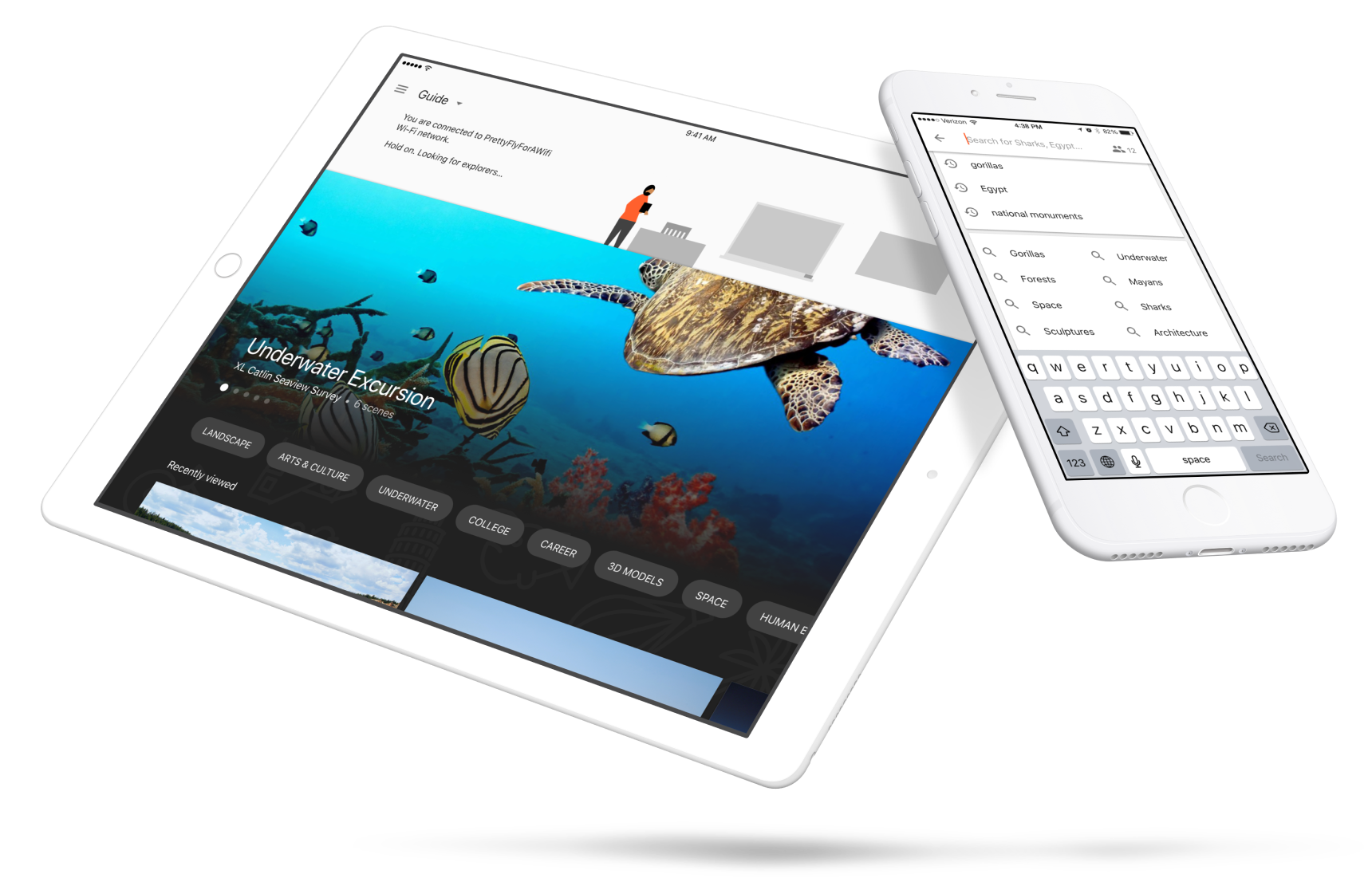Google Expeditions
Enhanced Search & Discovery · Fall 2016 – Spring 2017

Background
Google Expeditions initially launched with a limited set of virtual field trips that could easily be browsed in a flat list. As the number of field trips grew to hundreds there became a need for improved search/filtering functionalities as well as a scalable organization system. The ability to promote specific field trips was also desired.
My Role
- Lead Product Designer
- Prototyper
- Assistant UX Researcher
Platforms & Screen Sizes
- Android mobile and tablet
- iPhone and iPad
Goals
- Make in-app Expeditions search more powerful and structured
- Highlight diverse and changing set of field trips to users
- Ensure that new field trips added to the library are surfaced to users










